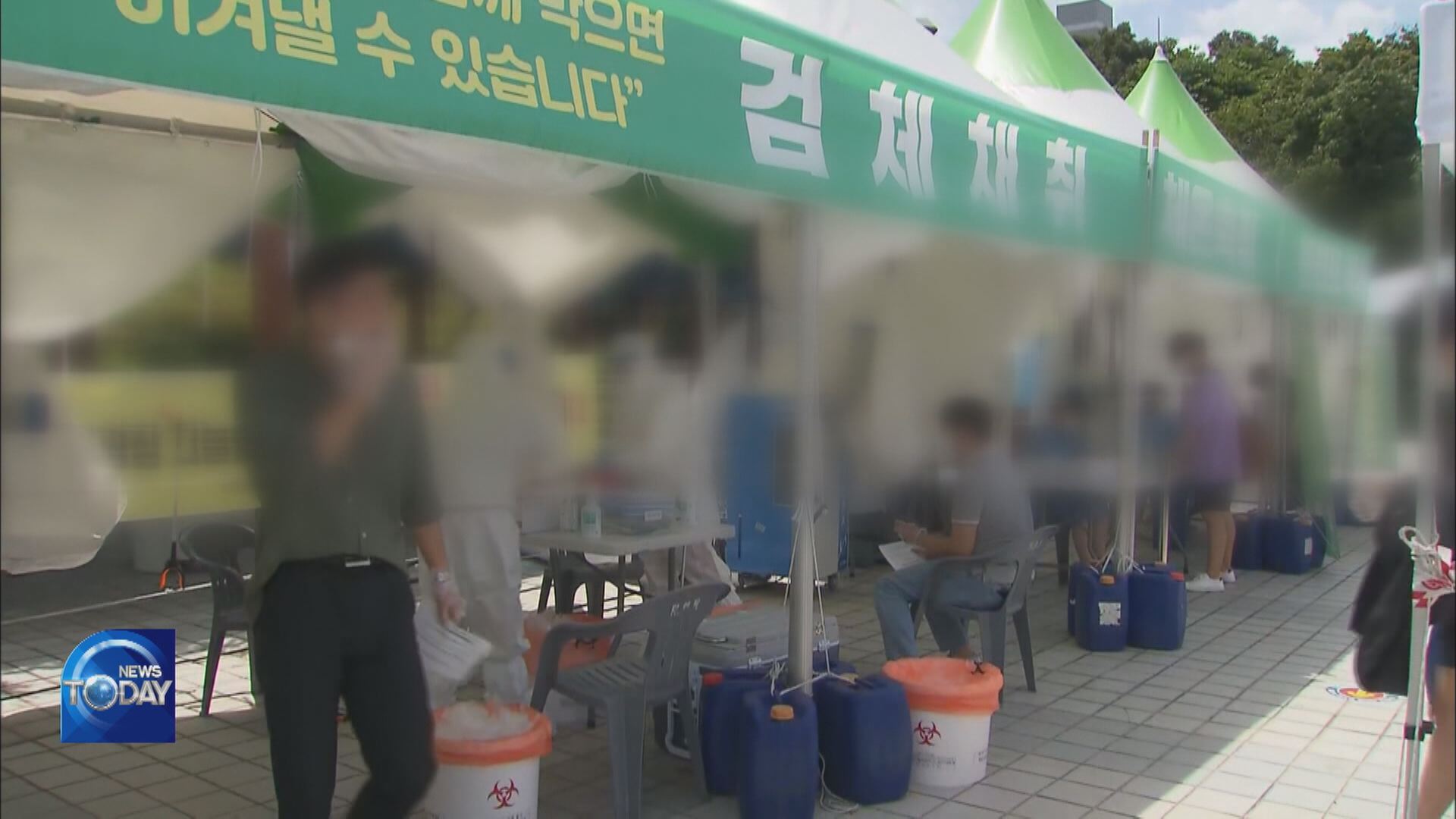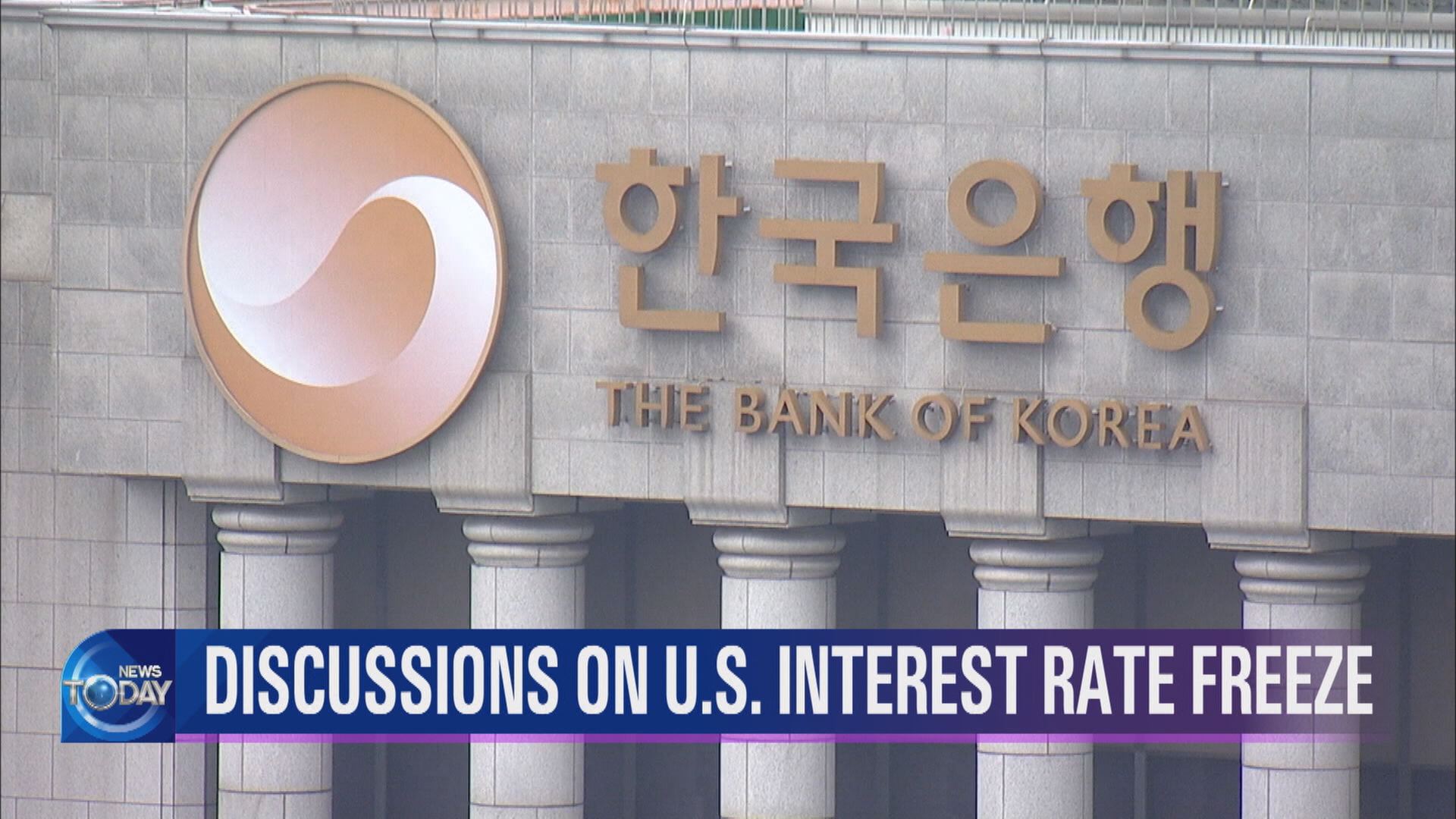4TH WAVE OF COVID-19 INFECTIONS
입력 2021.07.29 (15:21)
수정 2021.07.29 (16:45)
읽어주기 기능은 크롬기반의
브라우저에서만 사용하실 수 있습니다.
[Anchor Lead]
South Korea’s daily new COVID-19 cases have continued to increase by a four-digit number for over three weeks, setting a fresh high every week. The ongoing fourth wave of infections are showing no signs of abating. Next, we will hear from experts about whether the current surge has reached its peak, and when it could begin subsiding.
[Pkg]
July 7th. A day after South Korea added more than 1,200 new COVID-19 cases.
[Soundbite] Jeong Eun-kyeong(KDCA Director(Jul. 8)) : "If the current situation goes unchecked, the daily tally could reach 1,400 by the end of this month. In a worst-case scenario, it could top 2,000."
The nation had been predicted to see a daily tally of some 1,400 at the end of this month. But having already passed the mark, adding about 2,000 new infections daily is looking like a possibility. It's a situation imagined as a worst-case scenario. COVID-19 transmissions have become widespread in daily life, as nearly half of the new cases were transferred from those who had already been infected with the virus. A fresh record of infections is registered weekly, making it difficult to predict when the surge will reach its peak.
[Soundbite] Choi Won-suk(Korea University Ansan Hospital) : "Over 1,000 new infections can be reported daily until autumn. We should take action in preparation for such a prolonged surge."
Some 600 cases were reported in non-capital areas for the first time since the first wave of infections began in Daegu and Gyeongsangbuk-do Province last February and March. Some experts say both capital and non-capital regions should have taken tougher anti-virus measures simultaneously at the onset of the fourth surge, as nearly every corner of the nation can be reached in a day’s trip and more people are travelling for summer vacation. Therefore, it will likely take more time before the stronger social distancing rules produce intended effects.
[Soundbite] Sohn Young-rae(Central Disaster Management HQs) : "It is 28 percent higher, compared to the first week of January when we began curbing the third wave and the number of travelers came to 175 million."
The only solution is to buy time with rigorous social distancing rules while enhancing vaccination rates quickly. But it is very challenging to further raise distancing levels and stabilize vaccine supply.
[Soundbite] Choi Won-suk(Korea University Ansan Hospital) : "In fact, there hardly are solutions. It is quite challenging. And the people are now fatigued by the long battle with the pandemic."
[Soundbite] Jung Jae-hun(Gachon University’s Medical College) : "Due to the unstable supply of vaccines, vaccinations are delayed time and again, extending social distancing periods and public suffering."
The spread of the more transmissible Delta variant adds to difficulties in battling the pandemic.
South Korea’s daily new COVID-19 cases have continued to increase by a four-digit number for over three weeks, setting a fresh high every week. The ongoing fourth wave of infections are showing no signs of abating. Next, we will hear from experts about whether the current surge has reached its peak, and when it could begin subsiding.
[Pkg]
July 7th. A day after South Korea added more than 1,200 new COVID-19 cases.
[Soundbite] Jeong Eun-kyeong(KDCA Director(Jul. 8)) : "If the current situation goes unchecked, the daily tally could reach 1,400 by the end of this month. In a worst-case scenario, it could top 2,000."
The nation had been predicted to see a daily tally of some 1,400 at the end of this month. But having already passed the mark, adding about 2,000 new infections daily is looking like a possibility. It's a situation imagined as a worst-case scenario. COVID-19 transmissions have become widespread in daily life, as nearly half of the new cases were transferred from those who had already been infected with the virus. A fresh record of infections is registered weekly, making it difficult to predict when the surge will reach its peak.
[Soundbite] Choi Won-suk(Korea University Ansan Hospital) : "Over 1,000 new infections can be reported daily until autumn. We should take action in preparation for such a prolonged surge."
Some 600 cases were reported in non-capital areas for the first time since the first wave of infections began in Daegu and Gyeongsangbuk-do Province last February and March. Some experts say both capital and non-capital regions should have taken tougher anti-virus measures simultaneously at the onset of the fourth surge, as nearly every corner of the nation can be reached in a day’s trip and more people are travelling for summer vacation. Therefore, it will likely take more time before the stronger social distancing rules produce intended effects.
[Soundbite] Sohn Young-rae(Central Disaster Management HQs) : "It is 28 percent higher, compared to the first week of January when we began curbing the third wave and the number of travelers came to 175 million."
The only solution is to buy time with rigorous social distancing rules while enhancing vaccination rates quickly. But it is very challenging to further raise distancing levels and stabilize vaccine supply.
[Soundbite] Choi Won-suk(Korea University Ansan Hospital) : "In fact, there hardly are solutions. It is quite challenging. And the people are now fatigued by the long battle with the pandemic."
[Soundbite] Jung Jae-hun(Gachon University’s Medical College) : "Due to the unstable supply of vaccines, vaccinations are delayed time and again, extending social distancing periods and public suffering."
The spread of the more transmissible Delta variant adds to difficulties in battling the pandemic.
■ 제보하기
▷ 카카오톡 : 'KBS제보' 검색, 채널 추가
▷ 전화 : 02-781-1234, 4444
▷ 이메일 : kbs1234@kbs.co.kr
▷ 유튜브, 네이버, 카카오에서도 KBS뉴스를 구독해주세요!
- 4TH WAVE OF COVID-19 INFECTIONS
-
- 입력 2021-07-29 15:21:03
- 수정2021-07-29 16:45:58

[Anchor Lead]
South Korea’s daily new COVID-19 cases have continued to increase by a four-digit number for over three weeks, setting a fresh high every week. The ongoing fourth wave of infections are showing no signs of abating. Next, we will hear from experts about whether the current surge has reached its peak, and when it could begin subsiding.
[Pkg]
July 7th. A day after South Korea added more than 1,200 new COVID-19 cases.
[Soundbite] Jeong Eun-kyeong(KDCA Director(Jul. 8)) : "If the current situation goes unchecked, the daily tally could reach 1,400 by the end of this month. In a worst-case scenario, it could top 2,000."
The nation had been predicted to see a daily tally of some 1,400 at the end of this month. But having already passed the mark, adding about 2,000 new infections daily is looking like a possibility. It's a situation imagined as a worst-case scenario. COVID-19 transmissions have become widespread in daily life, as nearly half of the new cases were transferred from those who had already been infected with the virus. A fresh record of infections is registered weekly, making it difficult to predict when the surge will reach its peak.
[Soundbite] Choi Won-suk(Korea University Ansan Hospital) : "Over 1,000 new infections can be reported daily until autumn. We should take action in preparation for such a prolonged surge."
Some 600 cases were reported in non-capital areas for the first time since the first wave of infections began in Daegu and Gyeongsangbuk-do Province last February and March. Some experts say both capital and non-capital regions should have taken tougher anti-virus measures simultaneously at the onset of the fourth surge, as nearly every corner of the nation can be reached in a day’s trip and more people are travelling for summer vacation. Therefore, it will likely take more time before the stronger social distancing rules produce intended effects.
[Soundbite] Sohn Young-rae(Central Disaster Management HQs) : "It is 28 percent higher, compared to the first week of January when we began curbing the third wave and the number of travelers came to 175 million."
The only solution is to buy time with rigorous social distancing rules while enhancing vaccination rates quickly. But it is very challenging to further raise distancing levels and stabilize vaccine supply.
[Soundbite] Choi Won-suk(Korea University Ansan Hospital) : "In fact, there hardly are solutions. It is quite challenging. And the people are now fatigued by the long battle with the pandemic."
[Soundbite] Jung Jae-hun(Gachon University’s Medical College) : "Due to the unstable supply of vaccines, vaccinations are delayed time and again, extending social distancing periods and public suffering."
The spread of the more transmissible Delta variant adds to difficulties in battling the pandemic.
South Korea’s daily new COVID-19 cases have continued to increase by a four-digit number for over three weeks, setting a fresh high every week. The ongoing fourth wave of infections are showing no signs of abating. Next, we will hear from experts about whether the current surge has reached its peak, and when it could begin subsiding.
[Pkg]
July 7th. A day after South Korea added more than 1,200 new COVID-19 cases.
[Soundbite] Jeong Eun-kyeong(KDCA Director(Jul. 8)) : "If the current situation goes unchecked, the daily tally could reach 1,400 by the end of this month. In a worst-case scenario, it could top 2,000."
The nation had been predicted to see a daily tally of some 1,400 at the end of this month. But having already passed the mark, adding about 2,000 new infections daily is looking like a possibility. It's a situation imagined as a worst-case scenario. COVID-19 transmissions have become widespread in daily life, as nearly half of the new cases were transferred from those who had already been infected with the virus. A fresh record of infections is registered weekly, making it difficult to predict when the surge will reach its peak.
[Soundbite] Choi Won-suk(Korea University Ansan Hospital) : "Over 1,000 new infections can be reported daily until autumn. We should take action in preparation for such a prolonged surge."
Some 600 cases were reported in non-capital areas for the first time since the first wave of infections began in Daegu and Gyeongsangbuk-do Province last February and March. Some experts say both capital and non-capital regions should have taken tougher anti-virus measures simultaneously at the onset of the fourth surge, as nearly every corner of the nation can be reached in a day’s trip and more people are travelling for summer vacation. Therefore, it will likely take more time before the stronger social distancing rules produce intended effects.
[Soundbite] Sohn Young-rae(Central Disaster Management HQs) : "It is 28 percent higher, compared to the first week of January when we began curbing the third wave and the number of travelers came to 175 million."
The only solution is to buy time with rigorous social distancing rules while enhancing vaccination rates quickly. But it is very challenging to further raise distancing levels and stabilize vaccine supply.
[Soundbite] Choi Won-suk(Korea University Ansan Hospital) : "In fact, there hardly are solutions. It is quite challenging. And the people are now fatigued by the long battle with the pandemic."
[Soundbite] Jung Jae-hun(Gachon University’s Medical College) : "Due to the unstable supply of vaccines, vaccinations are delayed time and again, extending social distancing periods and public suffering."
The spread of the more transmissible Delta variant adds to difficulties in battling the pandemic.
이 기사가 좋으셨다면
-
좋아요
0
-
응원해요
0
-
후속 원해요
0










![[HEADLINE]](https://news.kbs.co.kr/data/news/title_image/newsmp4/news_today/2021/07/29/10_5244755.jpeg)

![[영상] 정진우 서울중앙지검장 첫 출근…<br>“신뢰받는 검찰 되도록 노력”](/data/fckeditor/vod/2025/07/04/305901751621912095.png)




이 기사에 대한 의견을 남겨주세요.